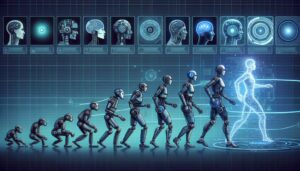Top 5 Jobs Facing Automation: Which Professions Will AI Replace First?
Introduction to AI Job Automation
Understanding AI Job Automation
Understanding AI job automation involves recognizing the intersection of artificial intelligence capabilities and human labor. AI systems excel at processing vast amounts of data, recognizing patterns, and executing tasks consistently without fatigue. Where tasks are repetitive, rule-based, and involve large datasets, AI can perform with superhuman efficiency. However, automation isn’t just about replacing manual labor; it’s increasingly encroaching on cognitive tasks that were once considered exclusively human. Machine learning algorithms are enabling computers to make decisions, predict outcomes, and even learn from their experiences, improving over time. As AI becomes more sophisticated, it’s crucial to identify which roles it can perform better than humans and understand the implications for the workforce. This shift is not just about job loss; it’s about transformation, necessitating a reevaluation of the skills and roles humans will need to focus on in an automated future.

Jobs Replaced by AI: Current Trends
As the tide of AI integration rises, certain job sectors are witnessing a significant transformation. Repetitive and pattern-based tasks have long been in the crosshairs of automation, and current trends indicate that roles in manufacturing and data entry are quickly being handed over to the capable circuits of AI systems. In the realm of customer service, AI chatbots and virtual assistants are now sophisticated enough to handle a wide range of inquiries, leading to a reduction in the need for human operators. Similarly, the transportation sector is starting to feel the impact of AI, with autonomous vehicle technology threatening to disrupt the livelihoods of drivers. Even more complex fields, such as healthcare, are seeing AI’s encroachment, with diagnostic processes and data analysis increasingly performed by algorithms, potentially replacing jobs in medical imaging and pathology.

Professions Most Vulnerable to AI
Abschnitt 3: Professions Most Vulnerable to AI
Die Welle der Automatisierung trifft nicht alle Berufe gleich. Besonders gefährdet sind Tätigkeiten mit repetitiven und vorhersagbaren Mustern, wie z. B. in der Fertigung und Datenverarbeitung. Kassierer, Kundendienstmitarbeiter und Buchhalter könnten durch fortschrittliche Algorithmen und Maschinenlernen ersetzt werden. Fahrerberufe stehen ebenfalls auf der Kippe, da autonome Fahrzeugtechnologien zunehmend ausgereift sind. Einfache juristische und medizinische Diagnoseaufgaben könnten ebenfalls durch KI-Systeme übernommen werden, die große Datenmengen effizienter analysieren als Menschen.
The Impact of Automation on Jobs
The impact of automation on jobs is a double-edged sword. On one side, it promises increased efficiency and the potential for higher productivity. On the other, it poses a significant threat to traditional employment, as machines and software algorithms become capable of performing tasks that were once the exclusive domain of human workers. This shift can lead to job displacement, with routine and repetitive roles being the most susceptible. However, it also opens up opportunities for new job creation in sectors that develop, manage, and maintain these automated systems. The challenge lies in managing the transition, ensuring that the workforce is equipped with the skills necessary to thrive in an increasingly automated world.
Adapting to the AI Revolution in the Workplace
As AI reshapes the job landscape, adaptation is crucial. Employees must cultivate a mindset of continuous learning and flexibility. Upskilling and reskilling become the watchwords, with a focus on developing AI-proof skills such as complex problem-solving, critical thinking, and creativity. Organizations should foster a culture of lifelong learning, providing training programs and encouraging workers to embrace the technological partners that can augment their capabilities. By staying agile and open to new ways of working alongside intelligent machines, workers can not only survive but thrive in the AI revolution.
Future Prospects: How to Stay Relevant
In a world where AI continues to reshape the job market, staying relevant requires a proactive approach. Embrace lifelong learning, consistently updating your skills to align with emerging tech trends. Focus on developing soft skills like creativity, problem-solving, and emotional intelligence, which are harder for AI to replicate. Cultivate flexibility and a willingness to adapt; consider cross-disciplinary expertise that can bridge technology with other fields. Networking and personal branding are also vital, as they can open doors to opportunities beyond the reach of automation. Lastly, keep an eye on the horizon, anticipating shifts in industry demands, and be ready to pivot when necessary to ensure your professional longevity in the AI era.
Conclusion: Embracing Change in an AI-Driven World
As we stand on the brink of a new era shaped by AI, it’s clear that automation is not a tide that can be turned. Instead, it presents an opportunity to redefine the value of human work. The key to thriving in this AI-driven world lies in our ability to adapt, learn, and leverage our unique human capabilities—creativity, emotional intelligence, and problem-solving—to complement the mechanical precision of AI. Embracing change doesn’t mean surrendering to a future where machines rule, but rather, it means evolving with the times and finding our place alongside AI, harnessing its potential to create a more efficient, productive, and innovative society. Let us step forward with resilience and optimism, prepared to ride the waves of change and transform challenges into stepping stones for growth.


